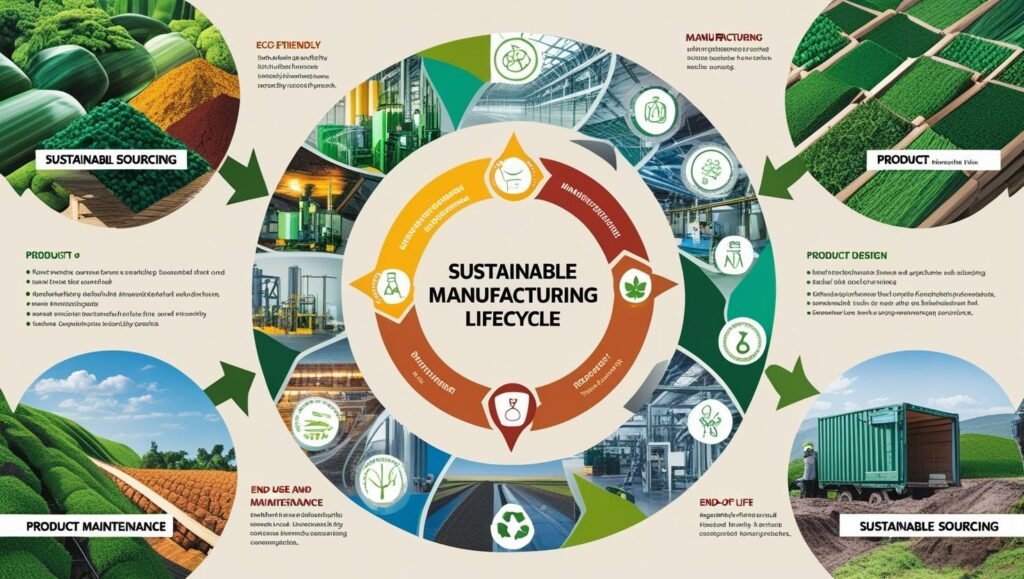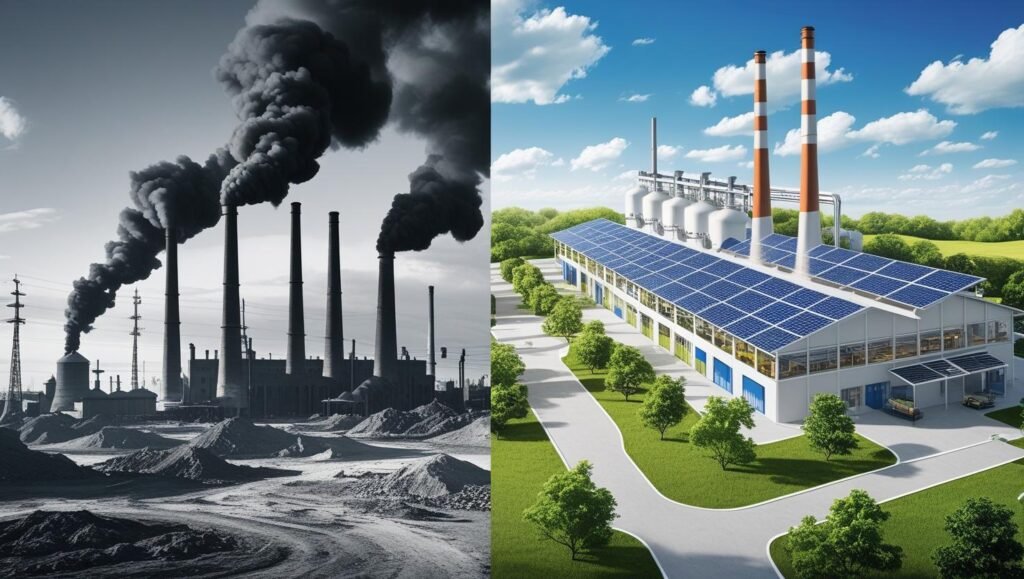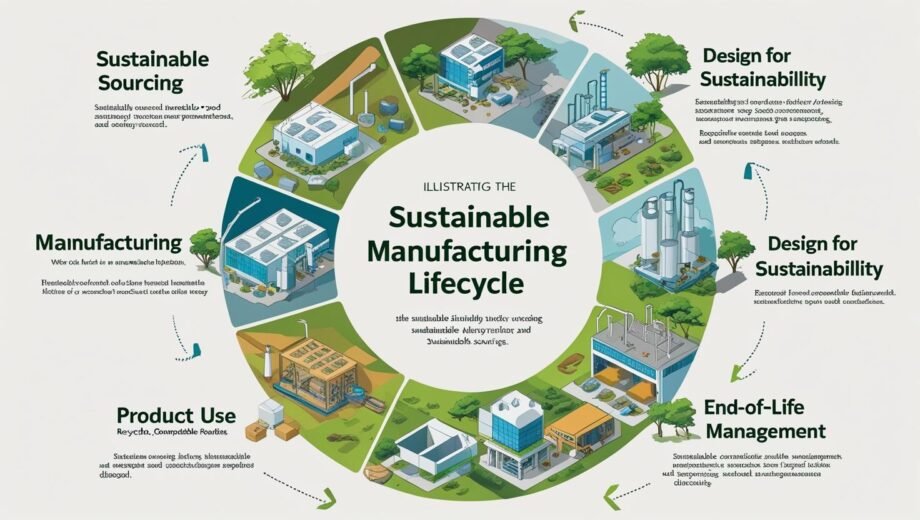The manufacturing sector, a cornerstone of global economies, has historically been a significant contributor to environmental challenges. From resource depletion and energy consumption to pollution and waste generation, traditional manufacturing practices have taken a toll on the planet. However, a paradigm shift is underway. Green technology in sustainable manufacturing is emerging as a powerful catalyst, offering innovative pathways to minimize environmental impact while enhancing efficiency and profitability. By embracing renewable, clean, and cutting-edge technology, manufacturers can pave the way for a truly sustainable future.
Understanding Sustainable Manufacturing Explained
Sustainable manufacturing goes beyond simply producing eco-friendly products. It encompasses a holistic approach that integrates environmental considerations into every stage of the manufacturing lifecycle, from raw material sourcing and production processes to product design, distribution, and end-of-life management. The core principles of sustainable manufacturing include:
- Resource Efficiency: Minimizing the use of energy, water, raw materials, and other natural resources.
- Waste Reduction: Reducing waste generation, promoting reuse and recycling, and implementing circular economy principles.
- Pollution Prevention: Minimizing air, water, and land pollution throughout the manufacturing process.
- Product Stewardship: Designing products that are durable, repairable, recyclable, and have a lower environmental footprint throughout their lifespan.
- Social Responsibility: Ensuring ethical labor practices and contributing to the well-being of communities.
Green technology acts as the engine driving the transition towards these sustainable manufacturing goals, providing the tools and techniques to achieve significant environmental improvements.

Key Areas of Green Technology in Sustainable Manufacturing
Explore green manufacturing innovations reveals a diverse range of technologies transforming the sector:
- Renewable Energy Integration:
- Solar Power: On-site solar panel installations can significantly reduce a manufacturing facility's reliance on fossil fuel-based electricity, lowering carbon emissions and energy costs.
- Wind Power: Larger industrial facilities or manufacturing parks can invest in WindWorks wind energy solutions or similar technologies, either on-site or through power purchase agreements, to access renewable energy.
- Geothermal Energy: Utilizing geothermal heat pumps for heating and cooling industrial buildings can provide a clean and efficient alternative to traditional HVAC systems.
- Energy Efficiency and Optimization:
- Smart Manufacturing Technologies: IoT (Internet of Things) sensors, AI-powered analytics, and automation systems can monitor energy consumption in real-time, identify inefficiencies, and optimize equipment operation to minimize energy waste.
- High-Efficiency Equipment: Investing in energy-efficient machinery, lighting systems, and HVAC equipment can lead to substantial reductions in energy use.
- Waste Heat Recovery: Capturing and reusing waste heat generated from industrial processes can significantly improve overall energy efficiency.
- Sustainable Materials and Processes:
- Bio-based Materials: Utilizing renewable resources like plant-based polymers and agricultural waste as alternatives to traditional plastics and other high-impact materials.
- Closed-Loop Production: Implementing systems that reuse and recycle materials within the manufacturing process, minimizing waste and reducing the need for virgin resources.
- Water Efficiency Technologies: Implementing water-saving fixtures, closed-loop water systems, and wastewater treatment technologies to reduce water consumption and pollution.
- Green Chemistry: Designing chemical processes that minimize the use and generation of hazardous substances. British Geological Survey – Understanding carbon capture and storage
- Pollution Control and Waste Management:
- Advanced Filtration and Emission Control Systems: Utilizing state-of-the-art technologies to capture and treat air and water pollutants generated during manufacturing processes.
- Waste-to-Energy Technologies: Converting non-recyclable waste into energy through processes like anaerobic digestion or gasification.
- Smart Waste Management Systems: Using sensors and data analytics to optimize waste collection, sorting, and recycling processes.

The Benefits of Embracing Green Technology in Sustainable Manufacturing
Purchase sustainable manufacturing tech offers numerous advantages for businesses:
- Reduced Operating Costs: Energy and resource efficiency measures can lead to significant long-term cost savings.
- Enhanced Brand Reputation and Customer Loyalty: Consumers are increasingly demanding sustainable products and supporting companies with strong environmental commitments.
- Compliance with Regulations: Stricter environmental regulations are being implemented globally, and adopting green technologies can help businesses stay ahead of the curve.
- Improved Innovation and Competitiveness: The pursuit of sustainability often drives innovation in product design and manufacturing processes, leading to new competitive advantages.
- Attracting and Retaining Talent: Employees are increasingly drawn to work for companies that prioritize sustainability.
- Contribution to a Healthier Planet: By reducing their environmental footprint, manufacturers can play a crucial role in mitigating climate change and protecting natural resources.
Exploring Global Efforts: UK Clean Technology and Beyond
The transition to sustainable manufacturing is a global movement. Initiatives and companies worldwide are driving innovation in this field. For example, the UK clean technology sector is actively developing and deploying cutting-edge solutions for energy efficiency, waste reduction, and sustainable materials. Organizations like the Clean Growth Leadership Network in the UK are fostering collaboration and promoting the adoption of clean technologies across various industries [Source: Clean Growth Leadership Network]. Similarly, advancements in manufacturing technology are constantly creating new opportunities for greener production methods.
Conclusion: Manufacturing a Sustainable Future
Green technology is no longer a niche concept in manufacturing; it is becoming the cornerstone of a sustainable and resilient industrial sector. By embracing renewable, clean, and efficient technologies, manufacturers can not only minimize their environmental impact but also unlock new opportunities for innovation, cost savings, and growth. As we continue to explore green manufacturing innovations, the path towards a truly sustainable future for manufacturing becomes increasingly clear, promising a healthier planet and a more prosperous economy. Businesses looking to thrive in the long term must recognize the pivotal role of green technology in shaping the future of manufacturing technology.
Want to Explore More?
Read our latest piece: Green Technologies of the Future: Which Developments Will Save the World?.
Comment below: What’s your take on the environmental cost of green tech?
Tag us on social media using #GreenTechRealityCheck
nature.com+7thenevadaindependent.com+7lithiumharvest.com+7
Have questions or thoughts? Comment below and let us know what more you’d like to learn about green technology—we’d love to hear from you!









